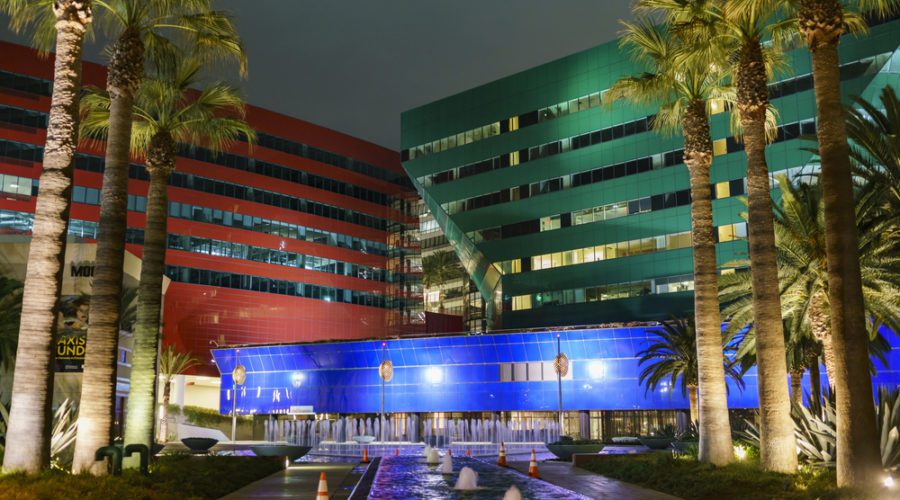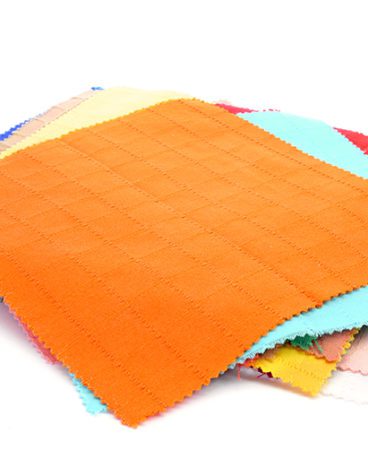Brands and their buildings are often associated with specific colors, the secret key of which is unique, or most especially, consistent color. Consider the Pacific Design Center in California (above) or the famous San Francisco Painted Ladies – landmark structures that are as memorable in appearance as their brands are well-known around the world.
As many of us know, architectural coatings are often used to coat a building or signage of a building so that its colors are lasting and memorable. They also provide numerous benefits to buildings beyond vibrancy, including impact resistance, weather resistance and corrosion resistance. All of this is critical to the structural and aesthetic success of a building.
With the right color matching and formation solution, manufacturers can create paint and stains that help build their brand reputation, inspire beautiful homes and spaces, and doing so faster and more cost efficiently. The process starts by measuring color samples with confidence using a reference grade spectrophotometer, then save time and money with accurate first-shot matches using smart matching formulation software. Once formulated, the match can then be evaluated and numerical color information can be shared with quality control software to enable objective pass/fail decisions for production batches.
Quick Tip: “Color tolerance” is a limit to how big the difference in color between a sample and the standard is allowed to be for the sample to be considered acceptable. For proper color on architectural coatings, tolerances vary greatly depending on the color chosen. Tolerancing is an extremely difficult task without proper equipment!
Coatings clearly serve a vital role in physically protecting an organization’s building and, indirectly, its reputation. Thus, planning for color is an important part of the design and building process and the connection of color and architectural coatings is held together by a precise, efficient color management system.
What Can Streamlined Digital Color Management Do?
1. Achieve Consistency
Consistency is critical in all aspects of business, and it goes well beyond the bottom line. Appearance consistency is vital for any consumer-facing business. Disorganization with branding and signage can lead to a sloppy, unreliable look and have a lasting negative connotation in the eyes of consumers. For restaurants, retail stores and other chains with locations all over the world, the only way to achieve consistent color throughout locations is to use color matching software. If a brand is associated with a particular shade of blue
(think: Tiffany & Co), it’s vital that, that exact blue is used across all locations, materials and properties. The coatings that make that shade of blue need to be consistent and color matching software achieves this.
2. Choose the Right Pigments
As stated above, the right pigments achieve the right color and look. The wrong ones don’t. What’s less obvious is the fact that incorrect pigments can cause fading and material distress to show up much earlier, causing an overall look of deterioration that is far more jarring than the wrong shade of red. Color matching software helps builders choose the exact right pigments and control all environmental variables that can affect their selection.
Multiple environmental factors, such as temperature, humidity and geographical location will affect how color appears. This is especially true when colored or pigmented coatings are exposed to the elements. If the correct pigments are not used for a desired color, that color may fade dramatically and change over a short period of time. Precise color management ensures that color is consistent and resistant regardless of whether coatings are being applied in the desert or the tropics.
3. Complete Projects Faster
One major challenge the architectural coatings industry faces is speed to market. For a building process to work properly, there needs to be a color formula for every color and every product in a store. The number of colors this can translate to is enormous, laying a tremendous amount of pressure on coatings manufacturers to get the colors right. A computerized color matching system decreases the number of errors by individuals attempting to match colors and drastically increases the speed in which products and building supplies can be turned around. With the colors digitally confirmed, builders have peace of mind that the color (and the coating) will be right every time.
4. Save Time and Resources
Color inaccuracy equals time and money, wasted. At the very least, one wrong color can lead to a perceived lack of quality on the part of the consumer. Beyond the very least, one wrong color can lead to a massive recall of sub-standard products, re-application of the right coatings over the wrong ones over a period of hours, days or weeks, or the obvious, visual deterioration of the architecture to which the coating is applied. All of it amounts to money and time lost in the effort to correct a simple error.





